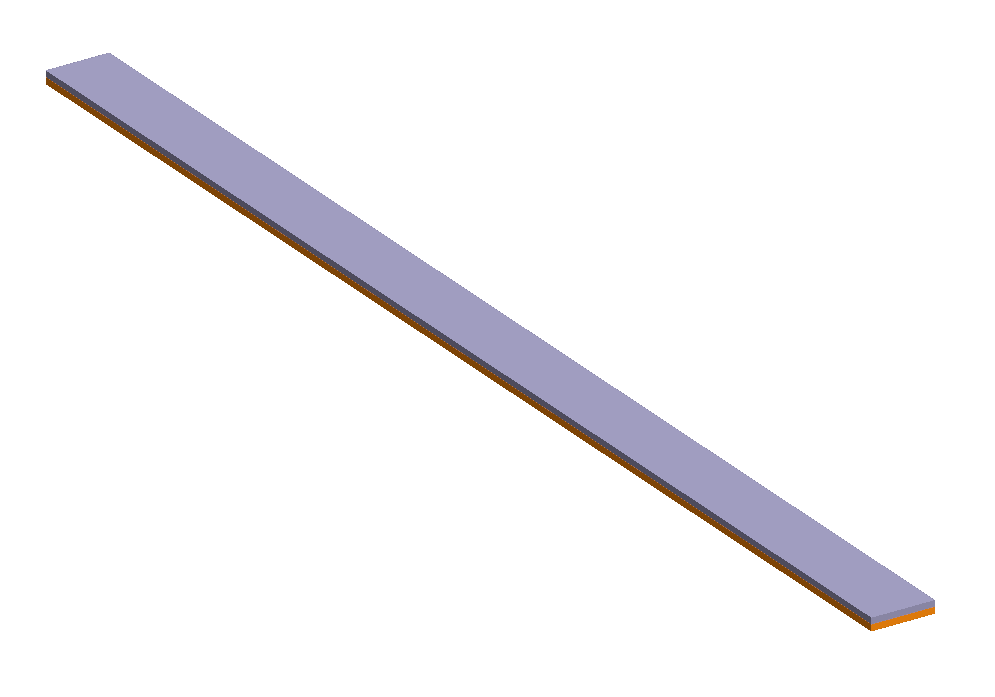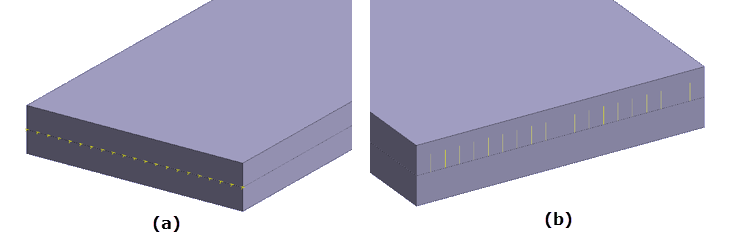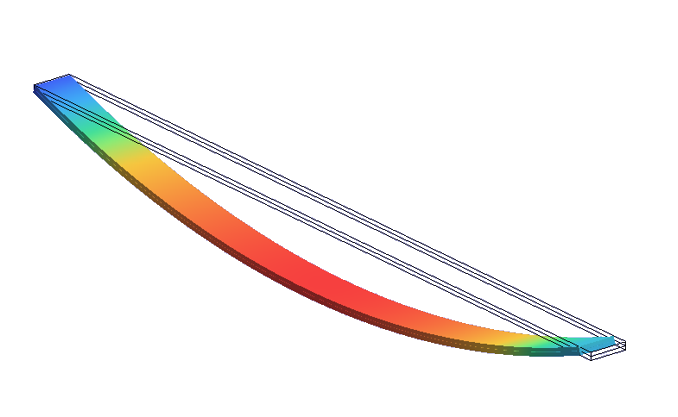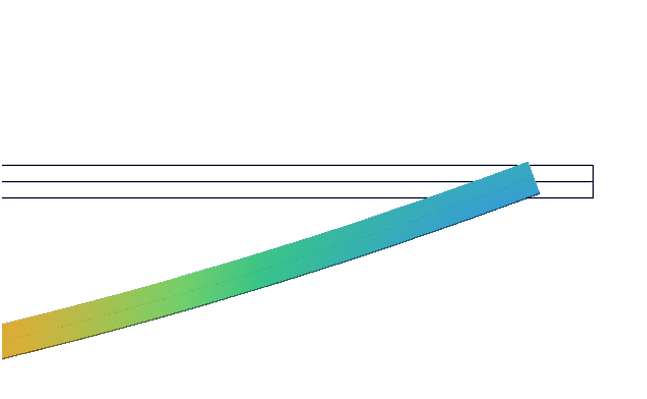SS-V: 5000 Coupled Analysis - Bimetallic Beam Under Thermal Load
Test No. VNL01Find temperature at the material interface and maximum deflection of the beam.
Definition

Figure 1.
The layers of materials are: 0.05 x 0.5 x 10 inch
- Properties: Material 1
- Value
- Modulus of Elasticity
- 1.e+7 psi
- Poisson's Ratio
- 0
- Coefficient of Thermal Expansion
- 14.5e-6 1/F
- Thermal Conductivity
- 5 BTU/(hr-in-F)
- Properties: Material 2
- Value
- Modulus of Elasticity
- 1.e+7 psi
- Poisson's Ratio
- 0
- Coefficient of Thermal Expansion
- 2.5e-6 1/F
- Thermal Conductivity
- 5 BTU/(hr-in-F)
The temperature at the top and bottom surfaces is 400 degrees F.
Results

Figure 2. Hinged supports

Figure 3. Deformed shape of the beam

Figure 4. Sliding of the simply supported end of the beam. due to nonlinear deformation
| Ref Solution* | SimSolid | % Difference | |
|---|---|---|---|
| Temperature at Contact [def-F] | 400.00 | 400.00 | 0.00% |
| Max Deflection [in] | 0.90 | 0.89 |
-0.88% |
* Ref Solution is 1D model